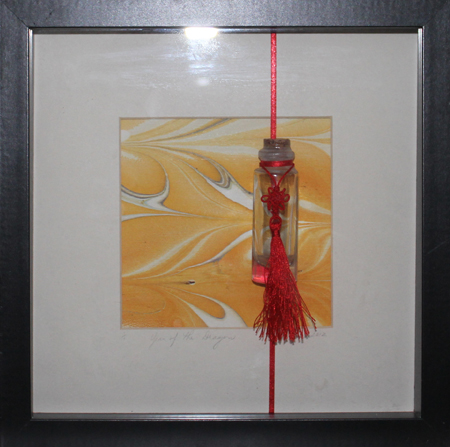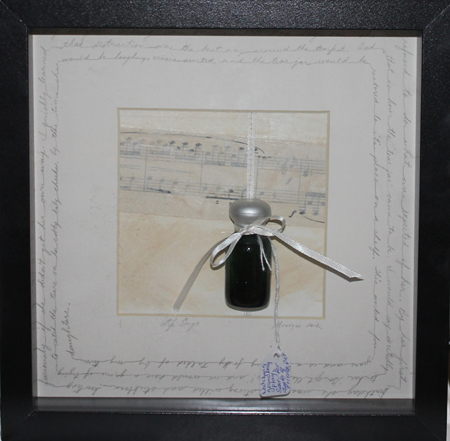TearRoom Project
The collection of human tears for an art exhibition
This exhibition will showcase human tears that I have collected.
April 2 - May 27, 2012
Museum of Antiquities - University of Saskatchewan Campus
Room 116 College Building
107 Administration Place
Saskatoon, Canada
Curated by Tracene Harvey and Anneka Drinkwater
Would you like to participate in the project by collecting your own tears contact Monique at the address above and she will send you a jar.
|
Year of the Dragon
|
Attention
|
Diagnosis
|
|
Acceptance |
Life Songs |
Surgery |
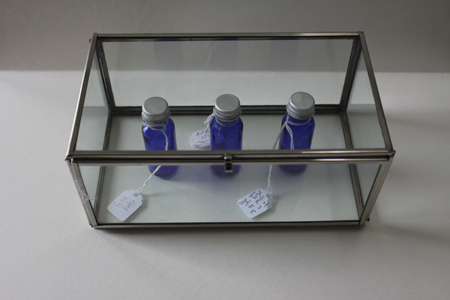 |
 |
|
 |
 |
|
|
An Ocean Between Us |
An Ocean Between Us My friend fell in love with a man from Belgium. They rarely get to see each other. This past Christmas he asked her to marry him. The tears in the jar inside the glass box are tears of joy and sadness at his parting. There is an ocean between them most of the time and the tears in the jar mark that distance.
|
An Ocean Between Us
|
| Here are some of the tear jars I have, I will post more as I have time and as they arrrive. | ||
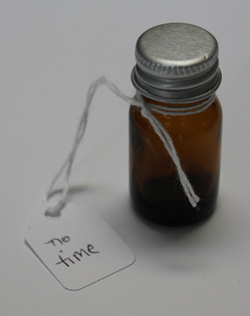 |
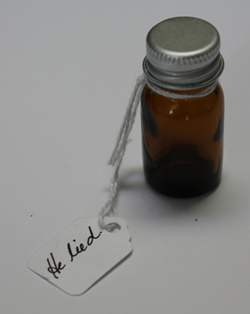 |
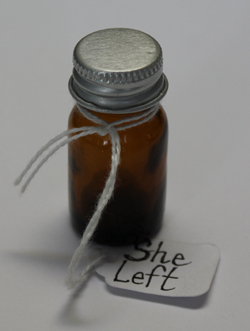 |
 |
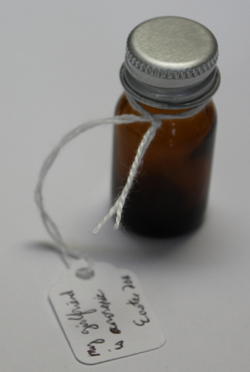 |
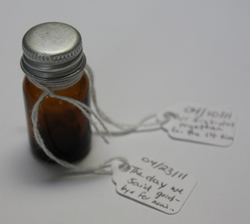 |
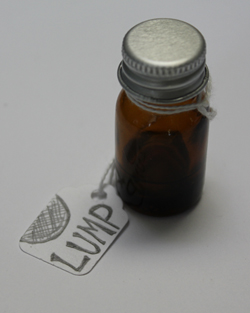 |
 |
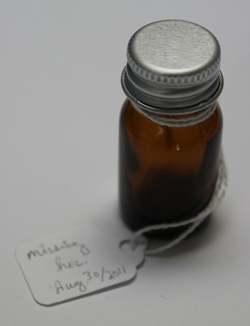 |
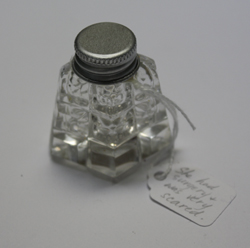 |
||
Tears like bits of glass formed in the eye – Leonard Michaels
tear (tîr)
n.
a. A drop of the clear salty liquid that is secreted by the lachrymal gland of the eye to lubricate the surface between the eyeball and eyelid and to wash away irritants.
b. tears A profusion of this liquid spilling from the eyes and wetting the cheeks, especially as an expression of emotion.
Civilizations have much in common throughout time. The Romans, the Greeks, Victorian England and people today practice catching tears. Whether it makes sense or not people do it. As humans attempt to deal with life’s challenges, symbols have been used to mark the emotions associated with those moments. Grief is such an overpowering and overwhelming experience people created an entire tradition to trap the expulsion of the salty fluid from the lachrymal gland in an effort to help make sense of the moment causing the grief.
Collecting tears in jars has been around for more than 3000 years. Sometimes it was used for egotistical or political statements, for sentimental purposes, for therapeutic reasons or even sometimes as a check and balance to measure the level that the person grieved in the absence of the giver of the tear jar. The personal collection of tears is powerful, memorable and personal. This series explores human emotion as captured in a jar.
There are questions that arise when analyzing this tradition and its appeal to each individual. What would make people want to collect their tears? What is the value of a tear? What is the value of strong emotion? Does the power of that emotion increase with the proximity of so many other tears together or does it decrease? Can we feel emotional reading the label as to why the person cried? Is there a connection that can be made between people crying at completely different times in different places? If I decided to catch my tears, am I expected to experience an emotional event at the same level as the person that gave the tear jar to me expects me to? Does the value of the tear jar and its artistic merit imply that my collection of tears in it must be used for a higher level of grief?
Tear bottles, tear jars, tear catchers, or lachrymatory, are part of human experience for over 3000 years. Evidence of use can be found in the cultures of ancient Greece, Rome, and the Middle East. Statues, tombs, and references in the literature of the day provide evidence related to the common practice of collecting tears when grieving. Large tear bottles were a part of the Roman spectacle and mourners filled small cups and added their tears together at the burial tomb. The more prominent members of Rome made efforts to prove their worth to society by having the most tears collected. Professional mourners capable of producing many tears were able to gain more compensation.
The Jewish culture of ancient times can be followed in the Old Testament of the Bible. Psalm 56:8 describes David as he prays to God, "Thou tellest my wanderings, put thou my tears in Thy bottle; are they not in Thy Book?" Tear jars and bottles are still being mass-produced today in the Middle East.
The collection of tears bottles makes an appearance in human history during the Victorian Age. During the 19th century, with the advancements in glass blowing techniques and decorations such as silver and pewter added, the tear jars became works of art as well as functional. Another advancement was the addition of special stoppers which allowed the tears to evaporate and when the jar was empty, the grieving period was over.
The collection of tears enters the North American continent with use during the American Civil War. Stories describe how women into tear catchers and saved them until their husbands returned. Their collected tears would show the men how much they were loved and missed. If the husband did not return alive, the tears collected would be saved for one year, and then on the anniversary of his death, the tears would be poured out on his grave, signifying the end of the mourning period.
In contemporary music and literature, tear bottles are being romanticized, with references to the power of the tear catching tradition occurring in music videos, novels, and poetry. You can learn more about the history of lachrymatory tear bottles at www.lachrymatory.com where this information was gathered from.
A Tear Bottle
Glass, wherein a Greek girl’s tears
Once were gathered as they fell,
After these two thousand years
Is there still no tale to tell?
Buried with her, in her mound
She is dust long since, but you
Only yesterday were found
Iridescent as the dew, —
Fashioned faultlessly, a form
Graceful as was hers whose cheek
Once against you made you warm
While you heard her sorrow speak.
At your lips I listen long
For some whispered word of her,
For some ghostly strain of song
In your haunted heart to stir.
But your crystal lips are dumb,
Hushed the music in you heart:
Ah, if she could only come
Back again and bid it start!
Long is Art, but Life so brief!
And the end seems so unjust:
This companion of her grief
Here to-day, while she is dust!
Frank Dempster Sherman
